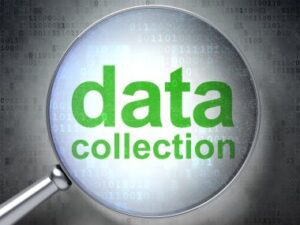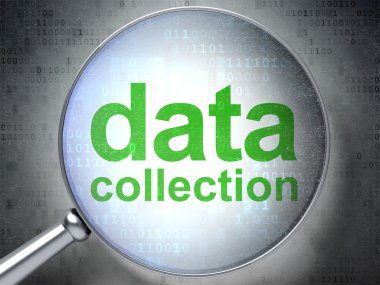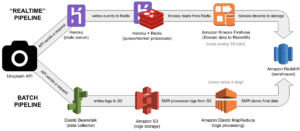THE BEST WAY TO COLLECT AN IMAGE DATASET
⇒ Contents:
-
Introduction to image data
-
Importance of collecting an image data
-
Understanding the types of image data
-
Methods for collecting image data
-
Tools and software for image data collection
-
Best practices for organizing and storing image data
-
Quality control and validation of image data
-
Ethical considerations in collecting image data
-
Case studies of successful image data collection
-
Conclusion and next steps
Introduction to image data
As a data scientist or machine learning enthusiast, one of the fundamental tasks is to collect and curate a robust image dataset. Image datasets serve as the building blocks for training machine learning models, computer vision algorithms, and various other applications. This article will provide a comprehensive guide on the process of collecting an image dataset, covering the importance of image datasets, the types of image datasets, methods for collection, tools and software, best practices for organization and storage, quality control, ethical considerations, and real-world case studies.
Importance of collecting an image data
Image datasets play a pivotal role in various domains, including healthcare, autonomous vehicles, agriculture, and more. By collecting a diverse and well-organized image dataset, researchers and developers can train models to accurately recognize objects, patterns, and anomalies within images. The size and quality of the dataset directly impact the performance and generalization capabilities of machine learning models. A meticulously collected image dataset can significantly enhance the accuracy and reliability of the trained models, leading to more impactful and reliable applications.
Furthermore, image datasets are essential for advancing research in computer vision, image recognition, and object detection. They serve as the foundation for benchmarking new algorithms, assessing the state-of-the-art performance, and pushing the boundaries of what is achievable in the field of visual perception. As the demand for intelligent systems that can understand and interpret visual data continues to grow, the significance of high-quality image datasets becomes increasingly evident.
Understanding the types of image data
Image datasets come in various forms, each serving different purposes and catering to specific applications. One of the primary distinctions is between labeled and unlabeled datasets. Labeled datasets contain images with associated annotations or tags that describe the content of the images, such as object classes, bounding boxes, or segmentation masks. Unlabeled datasets, on the other hand, consist of raw images without any explicit annotations, requiring manual or automated labeling processes for training machine learning models.
Another important categorization is based on the domain or subject matter of the images. Domain-specific datasets focus on a particular field or industry, such as medical imaging, satellite imagery, or industrial inspections. General-purpose datasets, on the contrary, encompass a wide range of visual data, aiming to capture diverse objects, scenes, and contexts. Understanding the types of image datasets is crucial for selecting the most suitable sources and approaches for collection.
Methods for collecting image data
The process of collecting an image data involves sourcing, acquiring, and organizing a large volume of images that align with the target application or research area. There are several methods for gathering image datasets, ranging from manual data collection to automated web scraping and large-scale crowd-sourcing initiatives. Manual collection often entails capturing images through cameras or mobile devices, particularly for custom or domain-specific datasets where specialized imaging equipment or unique perspectives are required.
Web scraping, on the other hand, enables the extraction of images from online sources, such as search engines, social media platforms, and open-access repositories. This method leverages web crawling and image downloading techniques to compile extensive datasets from publicly available web content. Additionally, crowd-sourcing platforms facilitate the collection of labeled datasets by engaging human annotators to label and verify images, ensuring the accuracy and quality of the dataset.
Tools and software for image data collection
Numerous tools and software are available to streamline the process of collecting and managing image datasets. Web scraping frameworks, like Scrapy and Beautiful Soup, provide efficient means for extracting images from web pages, handling different file formats, and navigating complex website structures. Image annotation tools, such as LabelImg and VGG Image Annotator, offer intuitive interfaces for annotating images with bounding boxes, polygons, or key points, essential for creating labeled datasets for object detection and segmentation tasks.
Furthermore, data management platforms, including Amazon S3, Google Cloud Storage, and Microsoft Azure Blob Storage, offer scalable and secure solutions for storing and organizing large image datasets. These cloud-based services provide versioning, access control, and integration with machine learning frameworks, facilitating seamless data pipelines for training and deploying image-based models. As the demand for image dataset collection grows, the availability of specialized tools and software continues to expand, catering to diverse data collection requirements.
https://youtube.com/watch?v=CQlLa_UWncg%3Ffeature%3Doembed
Best practices for organizing and storing image data
Organizing and storing image datasets in a structured and accessible manner is crucial for maintaining data integrity, facilitating collaboration, and ensuring reproducibility in research and development workflows. Adopting consistent naming conventions, directory structures, and metadata standards can simplify the process of navigating and managing large volumes of images. Additionally, leveraging version control systems, such as Git or Subversion, can track changes to the dataset, enabling researchers to revert to previous states and collaborate effectively.
Moreover, documenting the dataset properties, including image resolutions, formats, and associated annotations, enhances the interpretability and usability of the dataset. Utilizing data catalogs or metadata repositories allows for efficient search and discovery of relevant images based on various attributes, accelerating the exploration and utilization of the dataset. Embracing best practices for organization and storage not only improves the efficiency of working with image datasets but also fosters transparency and reproducibility in the broader research community.
Quality control and validation of image data
Maintaining the quality and reliability of an image dataset is paramount for ensuring the effectiveness and fairness of the machine learning models trained on the data. Quality control processes involve identifying and addressing issues such as image duplicates, incorrect annotations, and data biases that may impact the performance of the models. Visual inspection, statistical analysis, and automated validation techniques can identify outliers, inconsistencies, and errors within the dataset, enabling data curators to take corrective actions.
Validation of image data often entails assessing the inter-annotator agreement for labeled datasets, measuring the consistency of annotations provided by multiple annotators. This process helps quantify the reliability and ambiguity of the annotations, guiding the refinement and improvement of the labeling process. Additionally, conducting thorough evaluations of the model performance on validation subsets of the dataset can reveal potential weaknesses and areas for improvement, informing iterative data collection and curation efforts.
Ethical considerations in collecting image data
Ethical considerations are integral to the process of collecting image data, particularly with regard to privacy, consent, and the responsible use of visual data. When sourcing images from public sources or third-party repositories, it is essential to respect the rights and permissions associated with the images, ensuring compliance with copyright laws and usage policies. Moreover, when collecting images of individuals or sensitive environments, obtaining informed consent and anonymizing personal information are critical to upholding privacy and data protection standards.
Furthermore, addressing biases and representational fairness in image data is essential for mitigating algorithmic biases and promoting inclusive and equitable AI applications. Proactively evaluating the demographic and contextual diversity of the dataset, and addressing under-representation or misrepresentation, can contribute to the development of more inclusive and unbiased machine learning models. By integrating ethical considerations into the image dataset collection process, practitioners can uphold ethical standards and contribute to the responsible advancement of AI technologies.

Case studies of successful image data collection
Real-world case studies provide valuable insights into the practical challenges, strategies, and outcomes of image dataset collection in diverse domains. For instance, in the field of medical imaging, researchers have curated large-scale datasets of annotated medical images, facilitating the development of diagnostic and predictive models for various diseases and conditions. These efforts have involved collaborations with healthcare institutions, data sharing initiatives, and the application of privacy-preserving techniques to protect patient confidentiality.
In the context of environmental monitoring, satellite imagery datasets have been collected and analyzed to track changes in land cover, detect environmental hazards, and monitor natural disasters. Remote sensing technologies and open data initiatives have contributed to the availability of extensive image archives, empowering researchers and policymakers to make informed decisions and interventions based on the analysis of visual data. These case studies highlight the diverse applications and societal impact of image dataset collection, demonstrating the potential for driving positive change through data-driven insights.
Conclusion and next steps
In conclusion, collecting an image data is a multidimensional process that encompasses various considerations, methods, and best practices. The significance of image datasets in advancing AI technologies, solving real-world problems, and driving innovation cannot be overstated. By understanding the types of image datasets, leveraging appropriate tools and software, adhering to ethical standards, and embracing quality control measures, practitioners can contribute to the development of reliable and impactful machine learning models and computer vision applications.
Moving forward, the next steps involve continued exploration of emerging techniques for image data collection, collaboration on open data initiatives, and the integration of interdisciplinary perspectives to address the ethical, societal, and technical aspects of visual data. As the field of AI and machine learning evolves, the role of high-quality image datasets as the cornerstone of intelligent systems will continue to expand, shaping the future of technology and human-machine interaction.
For more information you can visit the following sites:
What are the best methods of data collection explain

